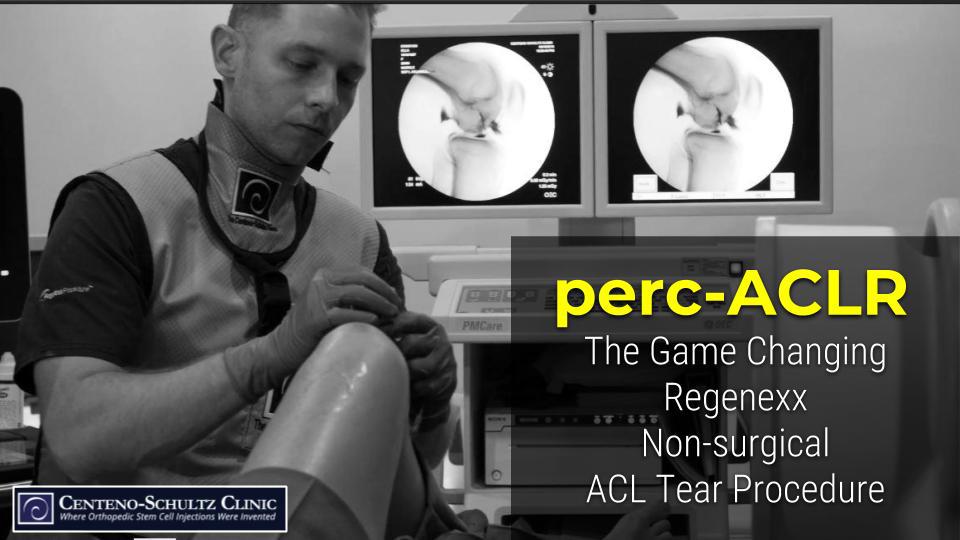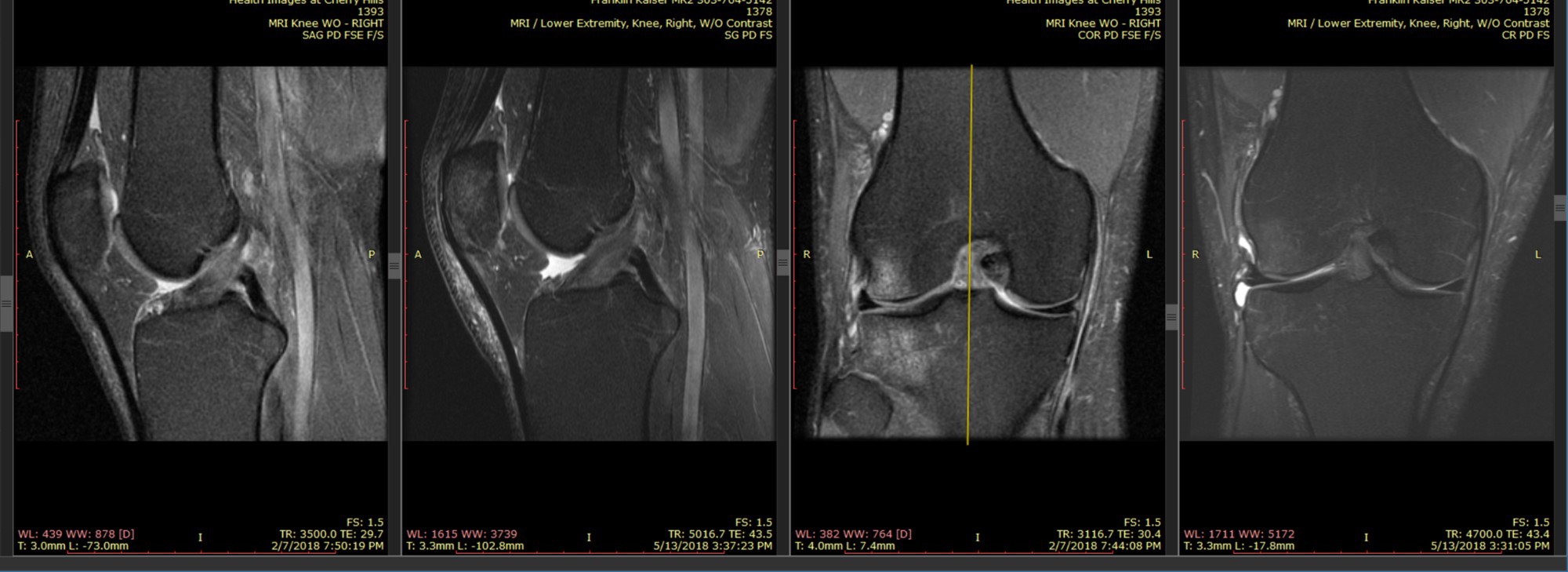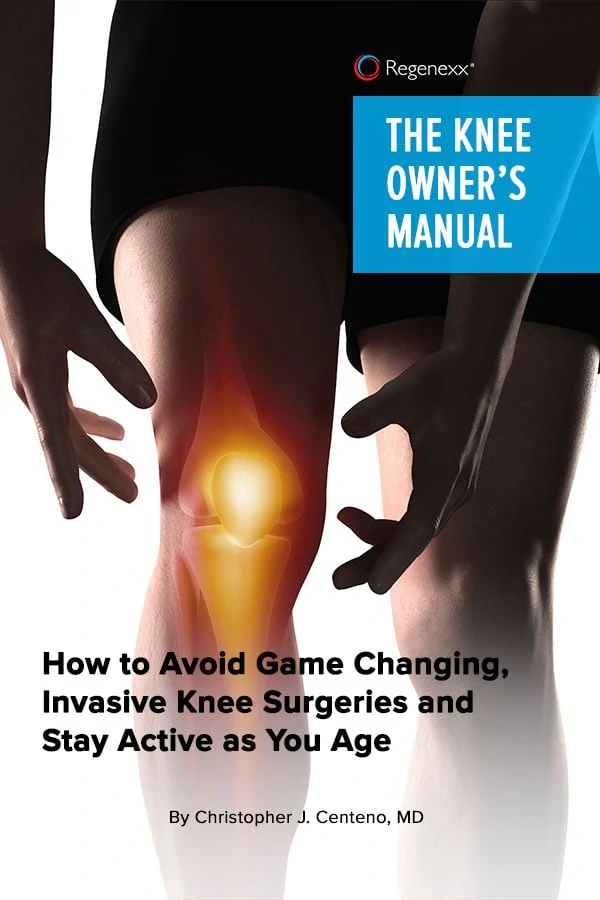Another day at Centeno-Schultz Clinic, and yet another MRI of a patient’s ACL that was destined for surgery…before the patient made his way to us. Thanks to our perc-ACLR procedure, an ultraprecise image-guided stem cell injection, his damaged ACL is healing. And it was accomplished without having to cut out this critical ligament, in fact, without surgery at all.
Today we’re going to share not just this patient success story but five things you need to know about the perc-ACLR procedure so you can be sure you’re getting the best results. First, let’s discuss ACL injections and ultrasound versus fluoroscopic guidance.
Why ACL Injections Without Guidance Are a Bad Idea
A decade ago, when we decided we wanted to start treating anterior cruciate ligament (ACL) tears, there were some physicians out there who used prolotherapy who had been trying to inject the ACL blind, meaning without any guidance. Dr. Centeno used one of our fluoroscopy machines to attempt to visualize this technique. What did he learn? Accurately injecting an ACL without guidance—in other words, mapping out where you thought the injection should go on the skin and then inserting the needle—was impossible.
Why was it so difficult? The ACL can’t actually even be “seen” on fluoroscopy; only the landmarks of where it should be can be seen. Using ultrasound, he could see a small portion of the ACL, but in this case, too, most of it couldn’t be visualized. Slowly, after the next year and spending a great deal of time in the anatomy texts, he became better and better at confirming that he was actually injecting the ACL.
Want to Get Back to What You Love, Without Surgery and Medication?
Fluoroscopy vs. Ultrasound for ACL Procedure
Once Dr. Centeno had perfected a reliable ACL injection technique, he taught it to Dr. Schultz and they determined that fluoroscopy (real-time X-ray) was more effective for the procedure. You can learn more about this if you’d like in the video below:
One ACL Patient
The MRI above is a physician patient of Dr. Centeno, who had an ACL tear. He was recommended for surgery, but he opted, instead, for the ACL procedure we pioneered called a percutaneous ACL repair (perc-ACLR). His same-day stem cell procedure consisted of a bone marrow aspiration (BMA), which we used to create a high-dose bone marrow concentrate. This was then precisely injected, using guidance, into multiple parts of the torn ACL complex. For more on this, watch our video below:
The first and third MRI images are his before films; the second and fourth are three months after the perc-ACL procedure. What do they show? Nice healing at this point in 2018 when he came in for a PRP booster, with full healing expected.
Five Important Things You Need to Know About the Perc-ACLR Procedure
It’s important to understand that though these successful results are common in our experience, the expertise required to achieve these results is not trivial. So we’ve put together five important things you need to know if you are planning on getting a perc-ACLR:
- It’s a difficult procedure to perform. There is only one course in existence that was created and is approved by the inventors of the technique. If your doctor has not been trained and certified by the IOF specifically to perform this procedure, find one who has.
- Ultrasound imaging is not a good option for this procedure; if your doctor doesn’t use fluoroscopy for guidance, find one who does.
- Knee surgery is unnecessary for injecting the ACL and only adds risk. Instead, this can be done as a same-day procedure using a precise percutaneous injection.
- About 70% of all ACL tears that are operated on can actually be healed via perc-ACLR. Only Regenexx providers, however, have a Perc-ACLR candidacy tool that allows them to determine who is and isn’t a good candidate.
- Midlevels (e.g. a nurse or physician assistant) working out of a chiropractor’s office and using amniotic or umbilical cord “stem cells,” which are actually dead stem cells, can’t perform this procedure. Midlevels are not even qualified to take the perc-ACLR.
Our perc-ACLR procedure is revolutionary as about 70% of all patients who now get highly invasive ACL reconstruction surgery now have a nonsurgical option. However, there is only one course on earth—provided by the Interventional Orthopedics Foundation—that’s sanctioned by the inventors of the perc-ACLR technique. To help you decide if the ACL procedure you are considering is the real deal, be sure you know the five important we covered today.


